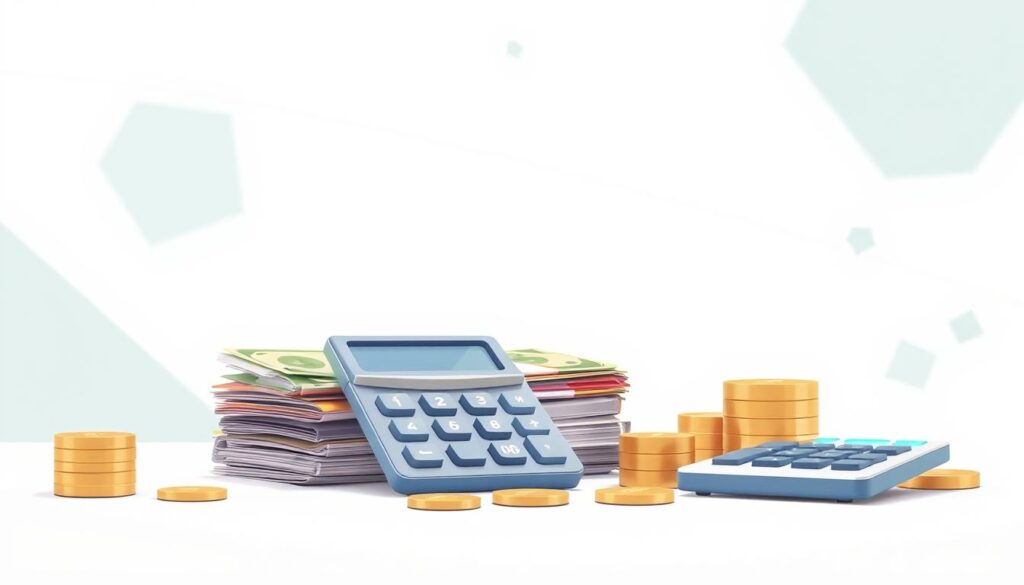Top 10 Finance Myths You Should Stop Believing
Many common rules about money limit progress. Long-held beliefs shape daily choices, often without proof. That leads to friction with bills, plans, and future goals.
This listicle clears the fog. It will debunk ten persistent myths and offer practical ways to protect both cash and time. Each entry shows the harm, then a better deal or habit to try.
The guide covers credit and cards, housing choices, investing access, budgeting, monthly payments, shared finances, retirement readiness, and emergency preparedness. Real examples show how thoughtful card use can build credit, when renting beats buying, and how low-cost index funds open investing to many earners.
Expect clear, evidence-based steps. The article helps translate complex financial advice into a plan aligned with your life and goals. Evaluate trade-offs instead of following one-size-fits-all rules, and reclaim control of everyday decisions.
Key Takeaways
- Many widely held rules about money are untested and can limit progress.
- Each myth is summarized, its harm explained, and a practical alternative given.
- Simple habits—emergency savings, low-cost funds, smart card use—boost resilience.
- Choices like renting vs. buying depend on goals, time horizon, and market costs.
- This guide helps trade blanket rules for decisions that fit your life and goals.
Why Money Myths Persist Today and How They Hurt Your Finances
Short, catchy money advice travels fast — and over years it becomes taken-for-granted truth. Cultural stories and repeated tips turn sensible-sounding lines into rules that ignore context. When those ideas go unchallenged, they shape daily choices and make money feel like something that happens to you.
The harm shows up slowly: chronic credit reliance, low savings, delayed investing, and decisions driven by monthly payments rather than total cost. These patterns raise fees and interest, leave emergencies underprepared, and push long-term goals farther away.
- Repeated advice often ignores personal context and trade-offs.
- Small habits built over years matter far more than one-time fixes.
- Reframe money as a tool you direct; give every dollar a job tied to goals.
Intentional planning is the antidote. Ask clear questions, budget for irregular expenses by converting them into monthly targets, and weigh trade-offs that match your life. The next sections will debunk common myths and offer practical, tested alternatives to protect both cash and time.
The Most Persistent Money Myths Debunked
Common advice can sound tidy but often misses key trade-offs that affect real costs. Below are three widely repeated claims and clear, practical ways to think about each one.
Myth: Debit is always better than credit
Debit cards feel safer, but that’s not the whole story. Credit cards can earn rewards, add purchase protection, and help build a credit history when payments are on time.
Use the better way: pay in full each month and keep utilization low. That signals reliability to lenders and can lower future borrowing costs.
Myth: Buy a home at all costs
Owning can be the right deal for some, but it adds maintenance, taxes, and limits mobility. Renting often fits people who move for work or live in high-cost markets.
One long-time renter in Dallas chose flexibility over upkeep and found renting was a smarter place to live given local prices and shift-heavy work.
Myth: Investing is only for rich people
Anyone can start investing with small, regular amounts. Low-cost index funds offer broad exposure and let compounding do the heavy lifting over time.
Bottom line: compare scenarios—rent vs. own, debit vs. credit, delay vs. invest—to see the real deal behind each choice.
Credit, Cards, and Emergencies: What Really Works
When an unexpected bill arrives, swiping a card seems easy — and that ease can become an expensive habit.
Relying on credit cards as a safety net often leads to interest charges and compounding balances that slow recovery after a shock.
Myth: Credit cards are for emergencies
Using a credit card for an emergency can convert a short-term problem into long-term debt.
- Build a 3–6 month emergency fund in cash to cover job loss, medical bills, or major repairs.
- Relying on a card may add fees and interest that make the same expense much costlier over time.
Myth: Paying bills on time means you’re “good with money”
Paying on time is necessary, but it is only table stakes. Real financial strength includes forecasting, aligning spending with goals, and managing risk.
Set alerts on each account and automate payments to avoid late fees while still reviewing totals each month.
Smart credit use: rewards, protection, and low utilization
Pick cards with clear rewards and purchase protection. Use a credit card in the right place—high-value purchases where dispute rights and insurance add real value.
Keep balances low relative to limits (aim near 35% or lower) and pay statements in full when possible. That deal—leveraging benefits while avoiding interest—is how credit improves options without trapping funds.
Budgeting, Monthly Payments, and the True Cost of “Affordable”
A low monthly charge can mask years of interest, fees, and missed goals. Look past the payment and compare total dollars, multi-year costs, and what you sacrifice to carry that obligation.

Myth: If I can afford the monthly payment, I can afford it
Monthly payment thinking hides the full costs. Stretching to fit a payment can add thousands in interest and reduce flexibility for future priorities.
Myth: I have enough in my account, so I don’t need a budget
Having a healthy account balance is helpful, but it is not a plan. Track fixed and variable expenses and give every dollar a clear job each month.
Myth: I’ll always have a car payment
Car payments are common, not inevitable. Save intentionally and consider reliable used vehicles to eliminate recurring auto expenses.
“Compare options by total dollars spent and trade-offs, not just whether the payment fits today.”
- Model ownership costs (insurance, maintenance, interest).
- Convert irregular expenses into monthly targets.
- Use credit cards only as tools—not as reasons to extend payments beyond limits.
| Choice | Typical Monthly | Total 5-Year Costs |
|---|---|---|
| New car loan | $450 | $27,000 |
| Used car (cash) | $0 | $9,000 |
| Rent-to-own | $300 | $20,500 |
Practical way: test scenarios before signing. Track expenses, model total costs, and confirm new payments still allow savings and emergency buffers.
Relationships, Retirement, and Long-Term Financial Wellness
When partners track accounts and tasks together, life shocks become easier to handle.
Myth: My partner manages our money, so I don’t need to think about it
Both people should know where accounts live, how to pay bills, and the status of savings and investments.
Document logins, list automatic paying bills, and keep a shared snapshot of balances. That visibility lowers risk if one person is sick, changes jobs, or is unavailable.
Myth: I’m too young to worry about retirement
Early years matter most for compound growth. Start a 401(k) or IRA now and raise contributions by 1–2% with each raise to build momentum.
Myth: You need a lot of money to reach big financial goals
Large aims grow from small, consistent deposits. Drive paid-for cars longer and redirect saved payments into investments to accelerate progress.
“Consistent, bite-sized steps beat waiting for a perfect lump sum.”
- Schedule quarterly money check-ins to rebalance goals and life plans.
- Keep a simple bill-process file so either partner can manage paying bills quickly.
| Action | Start | Impact in 10 years |
|---|---|---|
| Automatic IRA contributions $50/mo | Now | Modest balance growth via compounding |
| Increase 401(k) by 1% each raise | Next raise | Higher retirement balance with little pain |
| Keep car 5 extra years | When practical | More cash to invest |
Finance Myths You Should Stop Believing
Widespread rules about cash often hide trade-offs that cost time and flexibility.
Below are the top beliefs to drop now and the practical habits that work better.

Top beliefs to drop
- Credit as a safety net: relying on cards for shocks creates interest and longer recovery.
- Owning home is always best: owning home adds costs and reduces mobility; renting can fit life and market conditions.
- If the monthly payment fits, it’s affordable: payment-focused thinking hides total cost over time.
- Paying bills on time equals mastery: timeliness helps, but planning and buffers protect goals.
The real deal: habits that protect money and time
Create a plan that funds non-monthly expenses and keeps a buffer for shocks.
Use credit as a tool: pick cards for rewards and protection, and avoid carrying balances.
- Automate small savings to a high-yield buffer.
- Compare total home costs, mobility needs, and maintenance before choosing.
- Track timelines and total dollars rather than fixating on a single payment.
“Clear goals and simple, repeatable habits beat clever tricks every time.”
Smart Alternatives Backed by Real-World Advice
A small cash buffer and steady investing routines make shocks manageable. Replace reactive borrowing with a deliberate plan that keeps risk low and options open.
Build an emergency fund covering three to six months of core living expenses in a liquid, FDIC-insured account. That fund prevents high-interest debt when job loss, medical bills, or major repairs happen.
Replace credit cards for true emergencies
Relying on a credit card for an emergency often adds interest and encourages extra spending. Instead, set an automatic monthly transfer to a dedicated account to start building the fund.
Increase contributions after raises or windfalls so the fund grows without stress.
Start investing while you build the fund
Begin investing with low-cost index funds to capture broad market growth and keep fees low. It’s reasonable to split dollars between the fund and investment accounts based on risk tolerance and your current cushion.
- Set a target (3–6 months of expenses).
- Divide the total by the number of months you plan to save.
- Automate monthly transfers and review quarterly.
Optional extra mortgage payments can reduce total interest and shorten the loan if they fit priorities. Balance extra payments with building the fund and regular investment contributions.
“Consistent, small deposits beat waiting for perfect timing—cash for emergencies first, then steady investment growth.”
Keep credit utilization low and pay statements on time to support credit health. Progress over perfection wins: regular monthly steps add up and protect both dollars and peace of mind.
How to Put the Truth Into Practice Today
A simple process can convert vague goals into a clear monthly plan. Use a short framework at each payday to direct money where it matters. Small steps reduce surprises and make bills time easier to manage.
Create a realistic budget, align it to goals, and give every dollar a job
Start with a one-page budget. List income, fixed costs, and goals. Assign each dollar a job so spending matches priorities, not impulse.
Limit accounts and categories to keep the plan easy to follow. Reconcile the card and account activity weekly to stay on track.
Prioritize non-monthly expenses, automate contributions, and track progress
Make a list of non-monthly items—car repairs, annual fees, gifts—and divide each total across months. Fund them before they become surprise bills.
Automate transfers to savings, retirement, and investment accounts so progress happens without decisions each month.
- Ask these five questions every payday:
- What must money cover before the next check?
- Which larger, less frequent expenses need prep?
- What can be set aside for next month?
- Which goals get priority now?
- What changes are needed this pay period?
- Enable alerts and autopay so bills are paid on time without scrambling.
- Set card payments to autopay in full and review statements monthly to keep credit healthy.
Review progress monthly and adjust targets yearly. Over years, small consistency adds up and keeps goals within reach.
| Action | Monthly Amount | Purpose |
|---|---|---|
| Dedicated non-monthly fund | $50 | Car repairs, subscriptions, gifts |
| Automatic retirement contribution | $100 | Long-term goals |
| Emergency buffer transfer | $75 | 3–6 months core expenses |
“Give every dollar a job, automate where possible, and check in regularly to keep plans working.”
Conclusion
A practical plan beats catchy lines: focus on buffers, smart credit use, and steady investing to counter common money myths. Build a small emergency fund first, then add regular investment contributions so progress compounds over years.
Treat credit and cards as tools, not a bailout. Use a credit card for protection and rewards, pay in full when possible, and avoid revolving debt that adds interest and narrows choices.
Evaluate owning home as one choice among many. Compare total costs, mobility, and life priorities before making a long-term commitment.
Start simple: set one automated transfer, list three non-monthly expenses, and document key accounts and bill steps. A strong.
Pick one change today. Small, consistent moves protect money, time, and peace of mind.
FAQ
Is using a debit card always safer than a credit card?
Not necessarily. Debit cards pull directly from checking accounts and offer limited fraud protection compared with many credit cards. Credit cards from issuers like Chase, American Express, and Citi often include stronger dispute processes, zero-liability protections, and purchase protection. The key is responsible use: keep balances low, check statements weekly, and enable alerts to catch fraud early.
Should I buy a home no matter what?
No. Homeownership brings maintenance, property taxes, insurance, and less flexibility. Renting can make sense if you have a short job horizon, high local housing costs, or need mobility. Run a total-cost comparison that includes upkeep, closing costs, and opportunity cost of funds before deciding.
Is investing only for wealthy people?
Absolutely not. You can start investing with small amounts through low-cost index funds, ETFs, and apps like Vanguard, Fidelity, or Schwab. Compound growth rewards consistency more than a big initial deposit. Focus on low fees, diversification, and steady contributions.
Are credit cards meant mainly for emergencies?
Credit cards shouldn’t be your emergency plan. Interest charges can make debts costly. Build a liquid emergency fund—typically three to six months of essential expenses—in a high-yield savings account first. Use cards for convenience, rewards, and purchase protection, not as a backup savings vehicle.
If I always pay bills on time, does that mean I’m financially healthy?
Paying bills on time matters, but it’s not the whole picture. Financial health includes saving, investing, controlling discretionary spending, and managing debt levels. Someone can pay rent and utilities on time yet still lack emergency savings or carry high-interest debt that undermines long-term goals.
Can I assume I can afford a purchase if I can handle the monthly payment?
No. Monthly payments hide total cost, interest, insurance, and fees. A lower payment over longer terms usually increases total interest paid. Consider the full cost, impact on your budget, and whether the purchase aligns with financial goals before signing.
If I have money in my account, do I still need a budget?
Yes. A balance is a snapshot; a budget creates a plan. Without budgeting, it’s easy to overspend, miss savings goals, or run into cash shortfalls. Simple budgets that track income, fixed bills, and discretionary spending help prioritize goals and prevent surprises.
Will I always have a car payment forever?
No. Choosing used cars, shorter loan terms, or paying extra principal can eliminate payments sooner. Weigh depreciation and total ownership costs. For many, buying a reliable used vehicle and avoiding long loans reduces long-term expenses and frees cash flow.
If my partner manages money, do I still need to be involved?
Yes. Shared financial responsibility is safer. Understand bank accounts, debts, credit scores, and bills. Joint decisions and open communication reduce risk if circumstances change, like job loss or a relationship shift. Keep copies of key documents and know how to access accounts.
Am I too young to worry about retirement?
No. Starting early leverages compound interest and lowers the amount you must save later. Even small contributions to a 401(k), Roth IRA, or brokerage account compound significantly over decades. Aim to automate contributions and increase them with raises.
Do I need a lot of money to reach major goals like buying a house or retiring?
Not necessarily. Break large goals into smaller, measurable steps: save for a down payment, build an emergency fund, invest regularly. Consistent saving, budgeting, and disciplined investing in low-cost funds make big goals achievable even on modest incomes.
Should I rely on credit as a safety net instead of an emergency fund?
No. Relying on credit can lead to high interest and long repayment periods. Use a dedicated emergency fund for unexpected costs. Treat credit cards as tools for convenience and rewards, not as primary protection against income shocks.
What’s a practical alternative to high-fee investments?
Low-cost index funds and ETFs from Vanguard, Fidelity, and Schwab offer broad diversification with minimal fees. Avoid frequent trading, prioritize tax-advantaged accounts like 401(k)s and IRAs, and focus on asset allocation that matches your time horizon and risk tolerance.
How do I put better financial habits into practice right away?
Start with a realistic budget, automate savings and bill payments, and track non-monthly expenses. Build a small emergency fund then increase it, reduce high-interest debt, and set automatic investments into low-cost funds. Small, consistent steps compound into big results.
